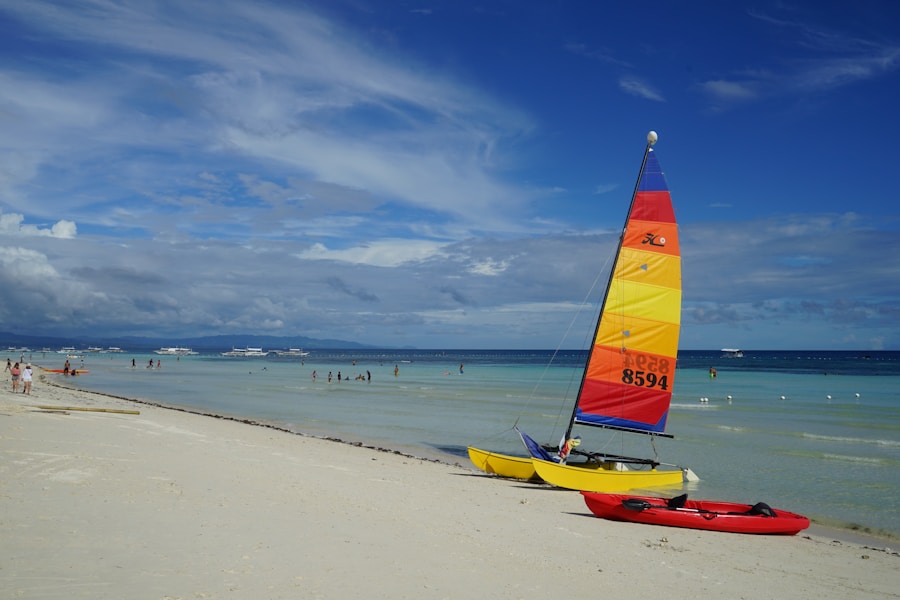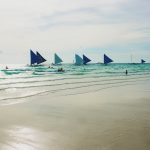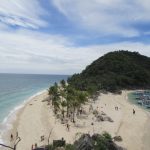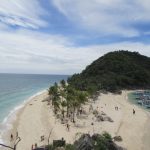Download links
How to install Discovering the Beauty of Boracay: A Tropical Paradise APK?
1. Tap the downloaded Discovering the Beauty of Boracay: A Tropical Paradise APK file.
2. Touch install.
3. Follow the steps on the screen.
Description
Boracay, a small island located in the central Philippines, is often heralded as one of the most beautiful tropical destinations in the world. Renowned for its powdery white sand beaches, crystal-clear waters, and vibrant nightlife, Boracay has become a magnet for tourists seeking both relaxation and adventure. The island spans approximately 7 kilometers in length and is surrounded by a stunning coral reef, making it not only a picturesque getaway but also a hub for marine biodiversity.
Its unique charm lies in the harmonious blend of natural beauty and modern amenities, offering visitors a chance to unwind while enjoying a plethora of activities. The island’s history is as rich as its natural resources. Originally inhabited by indigenous groups, Boracay was relatively unknown until the 1970s when it began to attract the attention of travelers seeking an unspoiled paradise.
Over the decades, it has transformed into a bustling tourist destination, yet it has managed to retain much of its allure. The local government and various stakeholders have worked diligently to balance development with environmental conservation, ensuring that Boracay remains a tropical paradise for generations to come. This delicate equilibrium is crucial as the island continues to evolve in response to the growing influx of visitors.
Key Takeaways
- Boracay is a tropical paradise known for its stunning beaches, vibrant nightlife, and rich local culture.
- The pristine beaches of Boracay offer powdery white sand, crystal-clear waters, and a range of water activities for visitors to enjoy.
- Exploring the underwater wonders of Boracay reveals a diverse marine ecosystem, including colorful coral reefs and exotic marine life.
- The vibrant nightlife of Boracay features beachfront bars, nightclubs, and live music, creating a lively and energetic atmosphere for visitors.
- Indulging in the local cuisine and culture of Boracay allows visitors to savor delicious Filipino dishes and experience traditional music and dance performances.
- Sustainable tourism in Boracay is crucial for preserving its natural beauty, and efforts are being made to protect the environment and promote responsible travel practices.
The Pristine Beaches of Boracay
Boracay is perhaps best known for its stunning beaches, with White Beach being the crown jewel. Stretching over four kilometers along the western coast, White Beach is famous for its fine, powdery sand that feels like talcum powder underfoot. The beach is divided into several stations, each offering a unique atmosphere.
Station 1 is known for its upscale resorts and quieter ambiance, while Station 2 buzzes with activity, featuring numerous bars, restaurants, and shops. Station 3 offers a more laid-back vibe, perfect for those looking to escape the crowds and enjoy a peaceful day by the sea. Beyond White Beach, Boracay boasts several other beautiful shorelines worth exploring.
Puka Shell Beach, located on the northern tip of the island, is less commercialized and offers a more serene experience. Named after the puka shells that adorn its shores, this beach is ideal for those seeking solitude and natural beauty. The beach is surrounded by lush greenery and provides stunning views of the sunset, making it a perfect spot for romantic evenings.
Another hidden gem is Bulabog Beach, which is popular among water sports enthusiasts due to its strong winds and waves. Here, visitors can engage in kiteboarding and windsurfing, adding an adventurous twist to their beach experience.
Exploring the Underwater Wonders of Boracay

The underwater ecosystem surrounding Boracay is as captivating as its beaches. The island is home to an array of marine life, including vibrant coral reefs teeming with colorful fish, sea turtles, and other fascinating creatures. Scuba diving and snorkeling are among the most popular activities for those looking to explore this underwater paradise.
Numerous dive shops offer guided tours to some of the best dive sites around Boracay, such as Crocodile Island and Yapak, where divers can witness breathtaking coral formations and diverse marine species. For those who prefer to stay closer to the surface, snorkeling provides an equally enchanting experience. The waters around Boracay are generally calm and clear, making it easy for snorkelers to observe the rich marine life just beneath the surface.
Popular snorkeling spots include Coral Garden and Tambisaan Beach, where visitors can encounter schools of tropical fish darting among the corals. Many tour operators also offer island-hopping excursions that combine snorkeling with visits to other nearby islands, allowing travelers to experience the beauty of the region while enjoying a day on the water.
Experiencing the Vibrant Nightlife of Boracay
| Metrics | Data |
|---|---|
| Number of Bars and Clubs | Over 50 bars and clubs |
| Operating Hours | Most bars and clubs open until 2am |
| Music Genres | Wide variety including EDM, reggae, pop, and more |
| Happy Hour Deals | Many establishments offer happy hour specials |
| Live Performances | Frequent live music and dance performances |
As the sun sets over Boracay, the island transforms into a vibrant hub of nightlife that caters to all tastes and preferences. From lively beach parties to intimate bars with live music, there is something for everyone after dark. The beachfront bars along White Beach come alive with music and laughter as tourists gather to enjoy cocktails while watching fire dancers perform mesmerizing routines.
Notable venues like Cocomangas Shooter Bar and Epic Boracay are famous for their energetic atmospheres and signature drinks that keep the party going until dawn. For those seeking a more relaxed evening, Boracay offers numerous options for unwinding with friends or loved ones.
Dining al fresco while listening to the gentle sound of waves creates an unforgettable experience. Additionally, some establishments host live music events or cultural performances that showcase Filipino talent, providing visitors with a taste of local culture while enjoying their evening out.
Indulging in the Local Cuisine and Culture of Boracay
Boracay’s culinary scene is as diverse as its visitors, offering a wide range of dining options that reflect both local flavors and international influences. Seafood lovers will find themselves in paradise with an abundance of fresh catches available at local markets and restaurants. Dishes such as grilled squid, kinilaw (a Filipino ceviche), and sweet chili crab are just a few examples of the delectable offerings that highlight the island’s maritime bounty.
Many beachfront eateries serve these dishes with a side of stunning ocean views, enhancing the dining experience. In addition to seafood, Boracay’s food scene also features traditional Filipino dishes that provide insight into the local culture. Adobo, sinigang (a sour soup), and lechon (roast pig) are staples that can be found in many restaurants across the island.
Street food vendors also offer an array of snacks such as fish balls, banana cue (fried bananas), and turon (banana spring rolls), allowing visitors to sample authentic flavors on-the-go. Engaging with local chefs or participating in cooking classes can further enrich one’s understanding of Filipino cuisine and its cultural significance.
Sustainable Tourism in Boracay: Preserving its Natural Beauty

Rehabilitation and Restoration
In 2018, Boracay underwent a six-month rehabilitation program aimed at addressing pressing issues such as waste management, water quality, and overdevelopment. This initiative not only restored the island’s pristine condition but also set a precedent for sustainable tourism practices.
Sustainable Practices and Regulations
Efforts to promote sustainability in Boracay include stricter regulations on construction and development projects, ensuring that new establishments adhere to environmental standards. Additionally, initiatives such as beach clean-up drives and educational programs aim to raise awareness among both locals and tourists about the importance of preserving the island’s ecosystems.
A Sustainable Future for Boracay
Many resorts now implement eco-friendly practices such as waste segregation, water conservation measures, and support for local communities through responsible sourcing of products and services. The future of Boracay hinges on maintaining this balance between tourism growth and environmental preservation. By fostering sustainable practices and encouraging responsible tourism behaviors among visitors, Boracay can continue to thrive as a tropical paradise while safeguarding its natural resources for future generations to enjoy.
If you’re planning a trip to Boracay, you may also be interested in checking out the article on Guitar Band Rock Battle here. This game could be a fun way to pass the time while relaxing on the beautiful beaches of Boracay.
FAQs
What is Boracay?
Boracay is a small island in the Philippines known for its beautiful white sand beaches and clear blue waters. It is a popular tourist destination for its stunning natural beauty and vibrant nightlife.
What are the popular activities in Boracay?
Some popular activities in Boracay include swimming, snorkeling, scuba diving, kite surfing, and island hopping. The island also offers a variety of restaurants, bars, and shops for visitors to enjoy.
When is the best time to visit Boracay?
The best time to visit Boracay is during the dry season, which typically runs from November to April. This is when the weather is most pleasant and the waters are calm, making it ideal for beach activities.
Is Boracay family-friendly?
Yes, Boracay is a family-friendly destination with plenty of activities and accommodations suitable for families. The island offers a range of options for visitors of all ages, including kid-friendly beaches and resorts.
Are there any environmental regulations in Boracay?
Yes, in 2018, the Philippine government closed Boracay for six months to undertake a massive rehabilitation effort to address issues such as overcrowding, pollution, and unregulated development. Since then, the island has implemented strict environmental regulations to ensure its sustainability.





